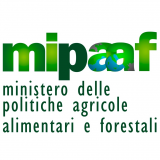
The alpine apples of South Tyrol have been sustaining the local economy for hundreds of years and are an important part of the area’s tradition and culture. For many centuries, apple trees were planted around farmsteads and the apples were eaten by rural families.
These “orchards” provided valuable food and also enjoyed special legal protection. The apples could only be transported beyond the provincial boundaries on a purpose-built horse-drawn vehicle called a “Kraxenträger”, or wicker basket carrier, which was used to carry various types of local fruit northwards through the Alpine passes.
The construction of the Brenner railway line in 1867 made exporting easier and the trade in apples intensified. They were considered a luxury product at the time, and even graced the tables of the imperial courts of Vienna, Berlin and St. Petersburg.
The improvement works along the River Adige (1880-1890) led to the reclamation of the valley floor, providing valuable areas for the cultivation of apple trees. The fruit traders built the first warehouses for storing the crop during this time.
The first fruit cooperatives were built in Burggrafenamt at the end of the nineteenth century. Until the mid-nineteenth century, there was no known effective protection against the diseases and pests that attacked fruit trees. The first plant protection products became available in the 1920s and many technological innovations were also introduced (tractors, sprayers, mulchers, etc.).
Instead of relying on a few large trees, espaliers and high-density planting became common. The size of the trees was increasingly reduced and new varieties were introduced (Golden Delicious, Red Delicious, Morgenduft and Jonathan).
AGRIOS, the working group for integrated production, was founded in 1988: its aim was to increase the amount of insects beneficial to pest control through the use of cultivation methods with a low environmental impact. In 2005, the European Union placed the name “Mela Alto Adige” PGI under protection.
The Product
The Protected Geographical Indication Mela Alto Adige, or Südtiroler Apfel g.g.A., refers to fresh fruit of the various varieties of the Malus communis Lam species: Braeburn, Elstar, Fuji, Gala, Golden Delicious, Granny Smith, Idared, Jonagold, Morgenduft, Red Delicious, Stayman Winesap, Pinova and Topaz.
These apples are known for their very bright skin colours, crispy flesh and long storage life. The various varieties differ in colour, texture, flavour and period of availability during the year. The various varieties differ in colour, texture, flavour and period of availability during the year.
Production
The Mela Alto Adige PGI is grown on soft, well-drained soils that are rich in oxygen in order to develop the fruit tree roots. Nutrients are provided by a balanced use of fertilisers, through a procedure based on soil and leaf analyses. For the entire duration of the planting, the grass is left to grow between each row so that, when regularly cut, it can provide a source of nutrients to ensure a perfect balance between the orchards and the soil.
Pruning is done each year during the winter while the trees are dormant, giving them a conical shape that allows light to penetrate the foliage. Harvesting is done exclusively by hand, with the ripe apples picked carefully. Maximum permissible production in the various areas may not exceed 68 tons per hectare. Long-term preservation of the fruits is provided through normal refrigeration techniques: the temperature, O2 and CO2 content, and humidity are adjusted to suit each variety.
Once harvested, the apples are transported to the plant in wooden crates and unloaded into tanks filled with cold water to facilitate selection based on colour and size, while also preventing damage to the fruit.
The product is arranged in suitable packaging with a label marked with the words Indicazione Geografica Protetta Mela Alto Adige or Südtiroler Apfel, which must be displayed in clear and indelible letters, clearly distinguishable from any other writing.
The production systems are designed to favour the natural soil and climate qualities of the apple growing areas through the use of techniques and methods with a low environmental impact, such as integrated production and organic farming. The most commonly used planting system is in single rows.
The Local Area
The apple growing area in South Tyrol, with a total extension of 18,000 hectares, is the largest enclosed fruit growing area in Europe, even though it is divided into very small plots.South Tyrol has more than 7,000 family-run apple farms, with an average size of barely 2.5 to 3 hectares in size. This farm land is often divided into several plots, at times quite distant from one another, allowing the apples to grow and ripen reaching the highest quality.
The apple growing area extends from Salorno in the south, along the Adige valley and through the Burggrafenamt, as far as Val Venosta. The Sud Tyrol apple is also cultivated in Eisacktal and near Bressanone.
Consorzio Mela Alto Adige



